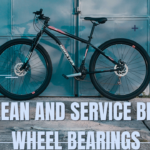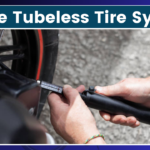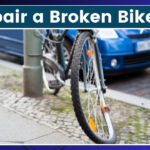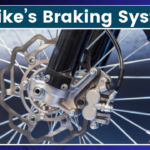As I sit here in my garage, surrounded by various bike parts and tools, I can’t help but think about how crucial a bike chain is to the overall performance of a bicycle. It’s funny how such a seemingly simple component can make or break your ride. I remember the first time I realized this – I was out on a long weekend ride when my chain suddenly snapped. Talk about a mood killer! Since then, I’ve made it my mission to understand the ins and outs of bike chains.
So, whether you’re a seasoned cyclist or just getting started, buckle up (or should I say, chain up?) as we dive into the world of bike chains. Trust me, by the time you finish reading this, you’ll be a chain connoisseur!
Standard Chains
Let’s start with the basics – the good old standard chain. These are the most common types you’ll find on most bicycles, especially those designed for casual riding or commuting. Standard chains typically have a width of 1/2 inch between the inner plates and are compatible with most derailleur systems.
When I first started cycling, I used a standard chain on my trusty commuter bike. It served me well for years, requiring minimal maintenance beyond regular cleaning and lubrication. If you’re not planning on any extreme riding or racing, a standard chain will likely meet all your needs.
Pros:
- Affordable and widely available
- Suitable for most casual riding situations
- Easy to maintain and replace
Cons:
- May not be ideal for high-performance riding
- Can be heavier than specialized chains

Narrow Chains
As I got more serious about cycling and upgraded to a road bike, I discovered the world of narrow chains. These chains are designed specifically for bikes with more gears, typically 9-speed systems and above. The narrower design allows for smoother shifting between the tighter gear spacing on these systems.
I remember the first time I used a narrow chain on my road bike – the difference in shifting performance was like night and day! The transitions between gears were so smooth, I felt like I was riding on butter.
Pros:
- Improved shifting performance on multi-speed systems
- Lighter weight compared to standard chains
- Often more durable due to higher quality materials
Cons:
- More expensive than standard chains
- May require more frequent replacement due to increased wear

Single-Speed Chains
Now, let me tell you about the time I decided to build a fixie (fixed-gear bike) for cruising around the city. That’s when I got acquainted with single-speed chains. These chains are specifically designed for bikes without derailleurs, such as fixed-gear or single-speed bicycles.
Single-speed chains are typically wider and more robust than their multi-speed counterparts. They need to be, considering all your pedaling power is transferred through that one chain! I found that my single-speed chain lasted much longer than the chains on my geared bikes, probably because it didn’t have to deal with the stress of shifting.
Pros:
- Extremely durable and long-lasting
- Simple design with no special compatibility requirements
- Often cheaper than multi-speed chains
Cons:
- Can be heavier than narrow chains
- Not suitable for bikes with multiple gears

BMX Chains
Speaking of robust chains, let’s talk about BMX chains. I don’t personally ride BMX, but I have a buddy who’s really into it. He’s always going on about how important a strong chain is for BMX riding, given the high-stress tricks and landings involved.
BMX chains are typically wider and stronger than other types of bike chains. They’re designed to withstand the intense forces involved in BMX riding, including hard landings and sudden changes in direction. Some BMX chains even come with a half-link design, which allows for more precise tensioning – crucial for those perfect tricks.
Pros:
- Extremely strong and durable
- Can withstand high-impact riding
- Often feature special designs for improved performance
Cons:
- Heavier than other types of chains
- May be overkill for non-BMX riding

E-Bike Chains
As e-bikes have surged in popularity, specialized chains have been developed to handle the unique demands of electric-assist bicycles. I recently test-rode an e-bike, and let me tell you, the torque these motors produce is no joke!
E-bike chains are designed to handle the increased power and torque produced by electric motors. They’re often wider and more robust than standard chains, with reinforced plates and pins to withstand the additional stress. Some e-bike chains also feature special coatings or materials to reduce wear and extend their lifespan.
Pros:
- Can handle the increased power of e-bike motors
- Often more durable than standard chains
- May require less frequent replacement
Cons:
- More expensive than standard chains
- May not be necessary for lower-powered e-bikes

Rust-Resistant Chains
Living in a rainy climate, I’ve had my fair share of rusty chains. That’s why I was thrilled when I discovered rust-resistant chains. These chains are typically made from stainless steel or feature special coatings that protect against corrosion.
I remember swapping out my standard chain for a rust-resistant one before a week-long bike tour in the Pacific Northwest. Despite riding through near-constant drizzle, my chain stayed rust-free and performed flawlessly throughout the trip. It was a game-changer for me, especially since I’m not always the best at remembering to clean and lube my chain after wet rides (I know, I know, I’m working on it!).
Pros:
- Excellent for wet or coastal environments
- Requires less maintenance than standard chains
- Can last longer in challenging conditions
Cons:
- More expensive than standard chains
- May not offer performance benefits in dry conditions

Lightweight Racing Chains
For all you speed demons out there, let’s talk about lightweight racing chains. When I decided to try my hand at some local road races, I quickly learned that every gram counts. That’s where these specialized chains come in.
Lightweight racing chains are designed to shave off every possible gram without sacrificing strength or performance. They often feature hollow pins, cut-out side plates, and exotic materials like titanium to achieve this weight reduction. The first time I used a lightweight chain, I was amazed at how much difference a few grams could make in terms of acceleration and overall bike feel.
Pros:
- Significantly lighter than standard chains
- Can improve acceleration and overall performance
- Often feature high-tech materials and designs
Cons:
- Very expensive compared to standard chains
- May wear out faster due to lighter construction
- Overkill for casual riding

Colored Chains
Okay, I’ll admit it – sometimes I’m a sucker for a bit of bling on my bike. That’s where colored chains come in. These chains feature colorful coatings or platings that can add a pop of personality to your ride.
I once put a gold-colored chain on my matte black commuter bike, and I can’t tell you how many compliments I got! It’s a small detail, but it made my bike stand out. Just keep in mind that the coloring is often just a thin coating, so it may wear off over time, especially in high-friction areas.
Pros:
- Adds a unique aesthetic touch to your bike
- Available in a wide range of colors
- Can be a fun way to personalize your ride
Cons:
- Coloring may wear off over time
- Often more expensive than standard chains
- No performance advantage over standard chains

Choosing the Right Chain for Your Bike
Now that we’ve covered the main types of bike chains, you might be wondering how to choose the right one for your bike. Here are a few factors to consider:
Compatibility: Make sure the chain is compatible with your bike’s drivetrain. The number of speeds on your bike will determine the width of the chain you need.
Riding Style: Consider how you use your bike. A standard chain might be fine for casual riding, but you might want a more specialized chain for racing or off-road adventures.
Environment: If you ride in wet or corrosive conditions often, a rust-resistant chain might be a worthwhile investment.
Budget: Specialized chains can be quite expensive. Decide how much you’re willing to spend and what features are most important to you.
Maintenance: Some chains require more frequent cleaning and lubrication than others. Consider how much time you’re willing to spend on maintenance.
Maintaining Your Bike Chain
Regardless of which type of chain you choose, proper maintenance is key to ensuring its longevity and performance. Here are a few tips I’ve picked up over the years:
Regular Cleaning: Clean your chain after every few rides, especially if you’ve been riding in dirty or wet conditions. A simple wipe-down can go a long way.
Lubrication: Keep your chain well-lubricated to reduce wear and improve performance. Be sure to use a lubricant appropriate for your riding conditions.
Check for Wear: Use a chain wear indicator tool to check your chain periodically. Replace the chain before it becomes too worn to prevent damage to your cassette and chainrings.
Proper Tension: For single-speed or fixed-gear bikes, ensure your chain has the correct tension. Too loose, and it might fall off; too tight, and it can cause unnecessary wear.
Avoid Cross-Chaining: On multi-speed bikes, try to avoid extreme cross-chain positions (big ring to big cog or small ring to small cog) as these can cause excessive wear.
Wrapping Up
Whew! We’ve covered a lot of ground here, from standard chains to exotic racing models. As I wrap up this article, I can’t help but think about how far bike chain technology has come. It’s pretty amazing when you consider that the basic design hasn’t changed much in over a century, yet we’re still finding ways to improve and specialize.
Remember, the best chain for you depends on your specific needs and riding style. Don’t be afraid to experiment with different types to find what works best for you. And whatever chain you choose, treat it well with regular maintenance, and it’ll keep your wheels spinning for miles to come.
Well, I’ve been sitting here typing for quite a while now, and I think it’s time I head out for a ride myself. There’s nothing quite like the smooth, quiet hum of a well-maintained chain as you cruise down the road. Happy riding, everyone!










